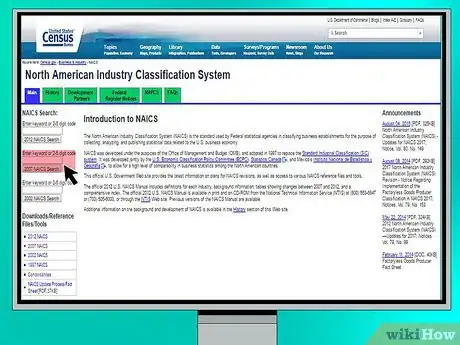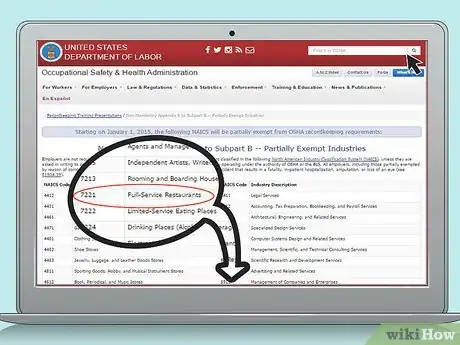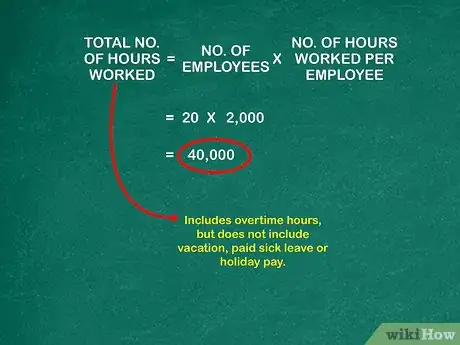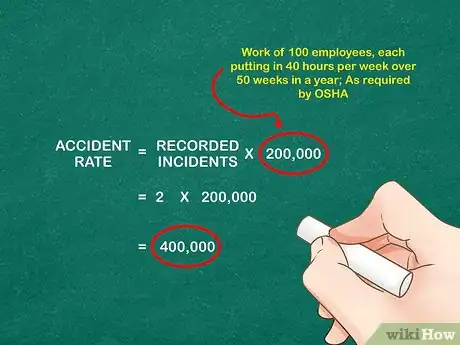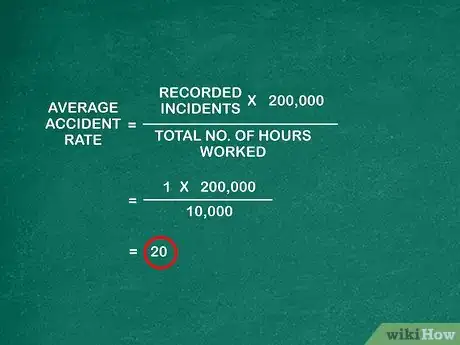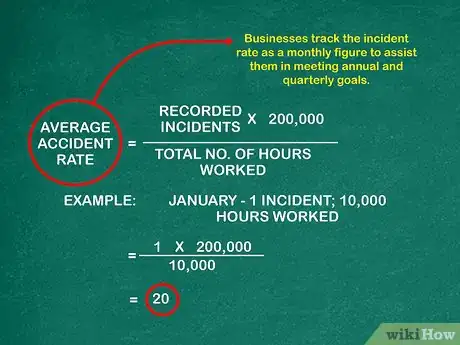This article was co-authored by Michael R. Lewis. Michael R. Lewis is a retired corporate executive, entrepreneur, and investment advisor in Texas. He has over 40 years of experience in business and finance, including as a Vice President for Blue Cross Blue Shield of Texas. He has a BBA in Industrial Management from the University of Texas at Austin.
This article has been viewed 228,537 times.
The Occupational Safety and Health Administration (OSHA) is a regulatory agency of the federal government that ensures, as much as possible, that American workers operate in a safe working environment.[1] The organization requires certain businesses to report their statistics concerning accidents, injuries and other incidents that occur while on the job. Accidents and incidents are logged on an OSHA 300 form that is usually tracked on a spreadsheet.
Steps
Determining If Your Business Must Report Incidents to OSHA
-
1Count the number of employees in your company. If your company had 10 or fewer employees at all times during the previous calendar year, then you do not need to report incidents to OSHA.[2]
-
2Determine your industry. Every business is part of a particular industry or sector. Before you can determine whether or not you need to report incidents to OSHA, you need to understand what industry you're part of.
- Industries are usually defined by broad categories like "Construction," "IT Services," "Food Service," etc.
- Pick a keyword or two that best describes your business. You'll need that for the next step.
Advertisement -
3Get the NAICS for your business. The NAICS is the North American Industry Classification. It's a 6-digit code that's used to classify a business. The federal government uses the code to maintain statistics about the types of businesses that exist in the United States.
- Visit the NAICS search site.
- Enter a keyword that describes your business in the field in the upper, right-hand corner of the screen, just above the button that reads "2007 NAICS Search". OSHA still classifies industries based on the older NAICS codes, so you'll need to use that search instead of the newer, 2012 search.[3]
- Click the "2007 NAICS Search" button.
- The new page that appears will be a list of NAICS codes and businesses. Select the NAICS code that best describes your business.
- For example, if your business is a restaurant and you put "restaurant" in the search field, you'll see a variety of codes with descriptions that include the word "restaurant." However, the code 722110 is used to classify full service restaurants.[4]
-
4Determine if your business must report incidents to OSHA using the NAICS. Visit OSHA's website to get the list of exempt types of business based on the NAICS.[5] For this step, you'll only need the first four digits of your NAICS. For example, if your NAICS is 722110, you only need the 7221 portion of the code.
- The OSHA website lists exempt industries by NAICS, sorted in ascending numerical order. Just scroll down until you see where your industry code would be located. If it's there, then your business is exempt. In this case, you can see that 7221 is listed and therefore full-service restaurants do not need to report incidents to OSHA.[6]
- Keep in mind, you will still need to report incidents to OSHA if you're requested to do so by OSHA, the Bureau of Labor Statistics, or any other government organization operating under the authority of OSHA.
Calculating Employee Accidents and Injuries
-
1Understand the formula for calculating accidents. The formula for calculating incidents is the number of recorded accidents in that year multiplied by 200,000 (to standardize the accident rate for 100 employees) and then divided by the number of employee labor hours worked. So the formula, again, is accident rate=(number of accidents*200,000)/number of hours worked.
- The 200,000 in this formula represents how many hours would be worked by 100 employees, each putting in 40 hours per week over 50 weeks in a year; OSHA requires the accident rate to be expressed as incidents per 100 employees with maximum straight-time hours.
-
2Pull the number of accidents and recordable incidents from the OSHA 300 log. The OSHA 300 log is what you use to record workplace injuries. In that log is a table where you record incidents. Simply count the number of lines that you've filled out in that table to determine the number of recordable incidents.
- Remember, the rate is calculated on an annual basis for OSHA compliance. So, you'll be reviewing data from the previous year to get the rate.
-
3Total the number of hours worked by all employees during the year in question. You'll need to pull some payroll data for this step. For example, if you have 20 employees and they each worked 2,000 hours during the year, then the total number of hours worked is 20 x 2,000 or 40,000.
- The total number of hours will include overtime hours, but does not include vacation, paid sick leave or holiday pay.
-
4Multiply the number of recordable incidents by 200,000. For example, if you recorded 2 incidents, then the number is 2*200,000 or 400,000.
-
5Divide by the result by the total number of hours worked. Take the number from Step 3 and divide it by the number from Step 2.
- For example, if you had 1 recordable incident out of 10,000 hours worked in a year. Your calculation would be 1*200,000 / 10,000.
-
6Prepare the monthly average incident rate. Many businesses like to track the incident rate as a monthly figure to assist them in meeting annual and quarterly goals.
- Adjust your calculation for each month to reflect the hours worked by all employees for only that month.
- Add the incidents and hours worked from each month and then calculate the incident rate on the totals.
- For instance, if you had 1 January incident over 10,000 hours worked, then your January average incident rate would be (1*200,000)/10,000, or 20.
- For another example, if you had eight accidents over 400,000 hours worked by employees in a year, you would calculate the accident rate as (8*200,000)/400,000, or 4.
References
- ↑ https://www.osha.gov/
- ↑ https://www.osha.gov/recordkeeping2014/records.html
- ↑ https://www.osha.gov/recordkeeping2014/faqs.html
- ↑ http://www.census.gov/cgi-bin/sssd/naics/naicsrch?code=722110&search=2007%20NAICS%20Search
- ↑ https://www.osha.gov/recordkeeping/ppt1/RK1exempttable.html
- ↑ https://www.osha.gov/pls/oshaweb/owadisp.show_document?p_table=STANDARDS&p_id=9633
About This Article
To calculate your average accident incident rate, you’ll need to multiply your recorded number of incidents by 200,000, then divide it by the total number of hours worked by all employees. Start by finding your number of recorded accidents and incidents from your OSHA 300 log. If you don’t know your total number of hours worked, multiply your number of employees by the hours worked per employee. The total number of hours will include overtime hours, but does not include vacation, paid sick leave or holiday pay. Multiply the number of recorded incidents by 200,000, which is the average hours worked by 100 full-time employees. This gives you your accident rate. To work out your average accident rate, you divide that number by the total number of hours worked. For example, if you had 1 recordable incident out of 10,000 hours worked in a year, you’d multiply 1 by 200,000, then divide it by 10,000, which would give you an average incident rate of 20. For more tips from our Financial co-author, including how to calculate your monthly accident incident rate, read on.


